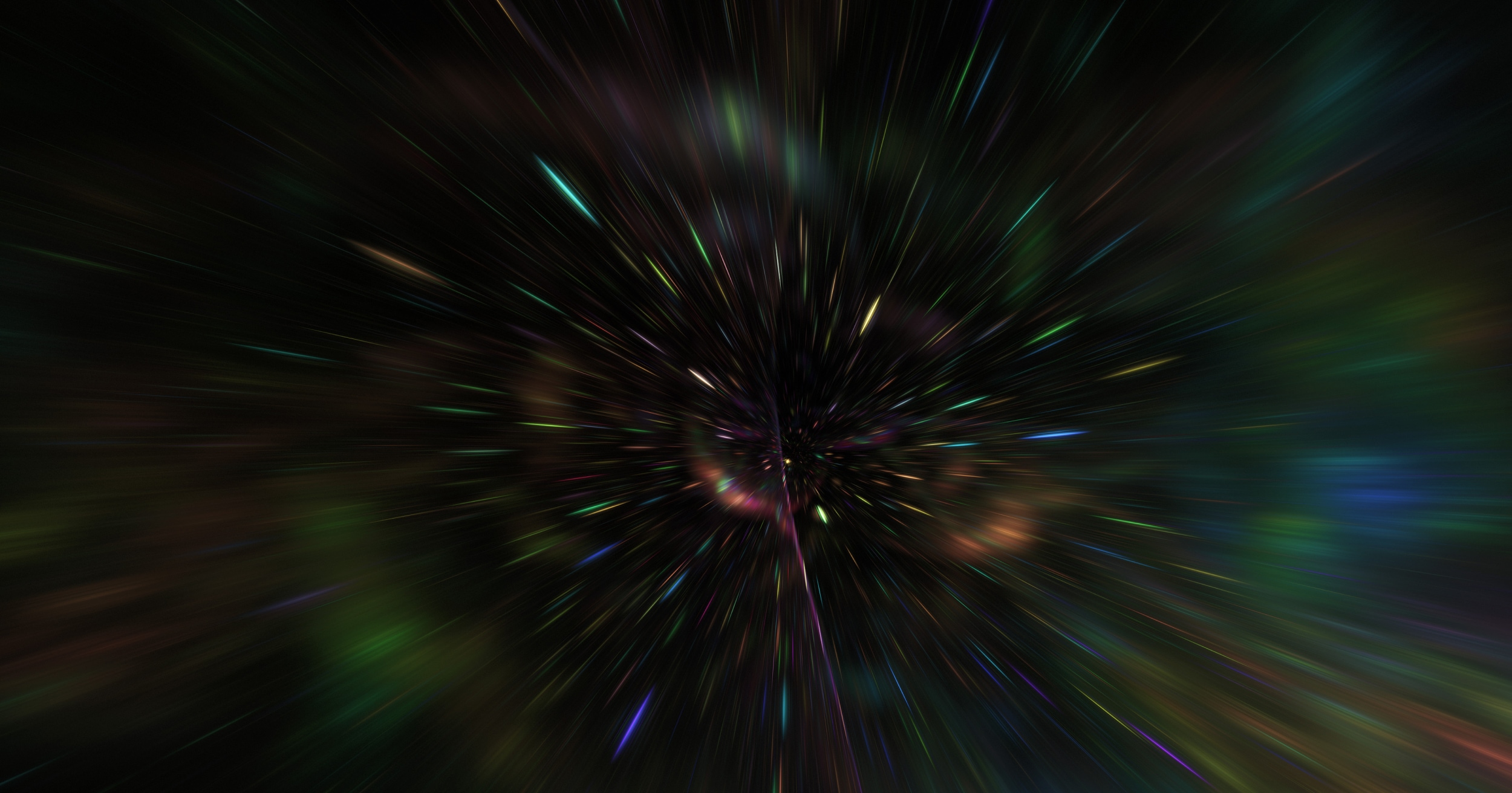Why do I see colors when I close my eyes?
When lying in bed with closed eyes, hovering between awake and asleep, have you ever seen pulsating blues and flickering oranges? If so, you haven’t unlocked a secret setting on your brain; you’re experiencing something known as phosphenes.
These curious little light shows are sometimes called closed-eye visuals, closed-eye hallucinations, or even colorful static — all different ways of describing those flashing shapes that appear when your eyes aren’t actually seeing anything.
Usually, they’re harmless, but if things get intense or start pairing up with other symptoms, you might want to keep reading.
What are phosphenes, and why do they happen?
Phosphenes can pop up any time you remove actual light from your sight — like turning off your lamp and closing your eyes. (Yes, it sounds a bit “eye-ronic,” but darkness can lead to the brightest bursts of imaginary light.)
In essence, your retina doesn’t fully clock out just because your eyelids do. It can still fire off signals to your brain, creating the sense that you see bright light with eyes closed. It's basically your visual system’s version of a screensaver kicking in when things go idle.
Some folks attribute these lights or colors to spiritual or mystical forces — looking at you, third eye fans — but from a purely biological standpoint, it’s about nerve signals.
Your retinas send teeny electrical impulses even when no external light is present, which explains why closing eyes and seeing colors can happen right before dozing off or whenever you’re in the dark. Though it might feel like your retinas are throwing a midnight rave, it’s typically not something to lose sleep over.

Common causes of seeing colors when eyes are closed
Some of the main suspects for your eyes throwing a concert-level light show include:
-
Pressure or rubbing: Gently press on your closed eyes, and you might see a starburst of colors. That’s your photoreceptor cells responding to pressure. They can’t tell the difference between “light hitting me” and “finger poking me,” so your brain just interprets it as “Woooo, bright colors!”
-
Random retinal activity: Even in the darkest cave, your retinal cells sometimes spark up spontaneously, producing faint flickers of color.
-
Afterimages: Stared at a bright lamp or your phone screen too long? You might see leftover shapes or color blobs after you shut your eyes.
-
Migraines or auras: If you experience migraines (the super intense drama queens of headaches), you might see flashing lights when closing your eyes — a migraine aura. These can include shimmering lines or zigzag patterns in your vision. Fun times.
-
Medical conditions: Serious issues like retinal detachment or certain neurological problems can also cause bursts of light or swirling colors. (Before you panic, remember these are rare.)

Order Contact Lenses Online
Learn how to order contact lenses online at 1-800 Contacts
Order contacts
Types of closed-eye visuals
When it comes to these phosphene kaleidoscopic spectacles, not all color-blobs are created equal. Below are some common types of closed-eye visuals people report seeing:
-
Bright light: A quick flash of brightness, even though the room is pitch-dark. It may look like a camera flash or a tiny spark that flutters away within seconds.
-
Red light: Ever notice a faint red glow after closing your eyes on a sunny day? Light can pass through your eyelids, making everything look reddish-orange. (Your eyelids are basically the world’s best-fitting sunglasses.)
-
Flashing lights: These rapid flickers can feel like mini fireworks behind your eyelids. They often happen with migraines or during sudden head movements (like standing up too fast). While usually brief, they might make you wonder if your eyeballs are auditioning for an EDM festival.
-
Colors: Sparkly purples, swirls of green, little spots of gold — the variety can be impressive. Your retina’s random firings can produce an entire Crayola box’s worth of hues. Sometimes, they dance; sometimes, they float. It’s practically an art exhibit on your inner eyelid canvas.
-
Eigengrau: Despite the fancy name, eigengrau is just the murky gray you see in complete darkness. (Yes, the “black” behind your closed eyes is more like a charcoal gray static.) Your visual system produces background noise, so you never see true black — just this fuzzy backdrop that occasionally sparks with faint lights.
Is it normal to see colors in your vision?
Yes, it can be normal to see colors in your vision. But sometimes, not so much. Let’s break it down.
When it’s normal to see colors in your vision
It’s normal to see colors in your vision:
-
When your eyes are closed: That swirling, twinkling light show in a dark room? Totally normal if it’s sporadic and not accompanied by pain or major vision changes. It’s simply your retina and visual cortex having a bit of a jam session.
-
After bright light exposure: If you’ve stared at a super-bright object (like the sun — but please don’t do that) or scrolled your phone for a few minutes (ahem, hours) at max brightness, seeing leftover halos or shapes is your eyes’ way of adjusting.
-
During a sneeze or cough: Ever sneezed so hard you saw stars? That’s increased pressure inside your head, momentarily (and harmlessly) squishing your photoreceptors.
-
Before falling asleep: A lot of us notice mild flashes or color blobs as we drift off. It can be a sign your body’s relaxing — and your retinas are playing catch with leftover signals.
- During meditation and altered states: Because the brain itself can produce phosphenes, people have reported seeing an increase in them during meditation and altered states of consciousness. While most of us are able to ignore them, there are those who intentionally focus on them, which can stimulate the visual cortex and make it produce more.

When it’s not normal to see colors in your vision
It’s not so normal to see colors in your vision when it’s:
-
Severe or abrupt: If you suddenly see bright flashing lights when you close your eyes or out of nowhere — even with eyes open — and it’s a brand-new thing, that’s cause for concern.
-
Persistent with other symptoms: If you have headaches, intense eye pain, or partial vision loss along with your colorful displays, it’s time to chat with an eye care professional. Migraines can cause aura-like visuals, but if you’re unsure, get it checked.
-
Accompanied by shadowy curtains or a flood of floaters: A sudden swarm of floaters or a dark “veil” in your peripheral vision can be a sign of retinal detachment.
-
Chronic or worsening: You’ve had these bright flickers for a while, and they’re getting more intense, more frequent, or you notice actual vision changes.
When to seek medical advice
Not every swirling color show is an emergency. (Otherwise, we’d all be in line at urgent care every time we rubbed our eyes.) But certain red flags suggest you may need an eye care professional’s input.
As well as the above abnormalities, keep an eye out for:
-
Sudden onset of flashing lights
-
Vision loss or changes
-
Headaches or eye pressure
-
Worrisome floaters
If you notice these symptoms or feel uneasy about the flashy state of your vision, do yourself a favor and book an appointment. And if you’re strapped for time, an online vision exam can get you started.
If your exam reveals you need updated lenses — or you just want a fresh supply — 1-800 Contacts can help.
Did you know you can order contacts online?
Say goodbye to trips to the eye doctor and hello to convenience! With 1-800 Contacts, you can easily order your contact lenses online and have them delivered straight to your door. Plus, our online vision exam makes it simple to get the prescription you need without leaving home. And the best part? You’ll save money on your first order with 1-800 Contacts. It’s never been easier to get your contacts!
Original publish date: 1/24/2024
Updated date: 5/20/2025





